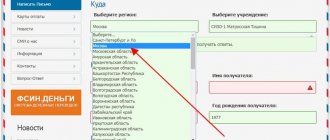The regime of a prisoner’s stay in a pre-trial detention center (hereinafter referred to as the pre-trial detention center) is quite harsh, and connections with the outside world are deliberately limited in order to prevent collusion with accomplices of the criminal act under investigation. Being an unspoken means of psychological pressure on a prisoner who is under investigation, but has not yet been imprisoned, the procedures for granting visits and transferring mail have certain specifics that should be known to those who are interested in contacting the prisoner.
What not to write about
Every message sent to a prisoner in a pre-trial detention center is checked by a censor. The content should avoid the following topics:
- The circumstances of the criminal case against which the addressee is charged. It is better to avoid any information and facts.
- Previously committed actions of the prisoner while at large, as well as events from his life that aggravate his guilt.
- Mentions of other persons involved in the criminal case.
- Methods of communication with prisoners prohibited by the internal regulations of FSIN institutions (mobile phones, etc.).
- Any information relating to drugs, weapons, extremism.
- Personal attitude to the case under consideration and the constitutional system of the country.
If such information is found in circulation, the administration of the pre-trial detention center has the right to transfer it to the investigator. In addition, there is a possibility of dishonest work by the staff of the pre-trial detention center and the subsequent transfer of any information to the criminal environment.
You need to write as simply as possible. You cannot use signs, symbols, or marks that could be perceived as a code. Profanity and jargon are not allowed in correspondence.
It is best if the content of the message contains information about the health of relatives, the success of children, and any significant events for the family.
Features of the transfer of correspondence to those arrested in 2022
The procedure for sending a letter to an arrested person, as well as to a prisoner, is regulated by the “Internal Rules of Correctional Institutions” (Order No. 205 of the Ministry of Justice of the Russian Federation of November 3, 2005).
In accordance with it, absolutely all correspondence received and sent is subject to strict censorship by the administration of the pre-trial detention center.
Only correspondence with higher government bodies, courts, prosecutors, international human rights organizations and the European Court of Human Rights is not subject to censorship
The receipt and sending of letters and telegrams by prisoners is carried out at their expense without any restrictions, strictly through the administration of the FSIN institution.
The letter to the pre-trial detention center is opened and carefully read with an analysis of the content.
In this regard, it is worth paying attention to some requirements for the semantic component of the text of the letter.
How to apply
There are different options for sending messages to prisoners in a pre-trial detention center, but in any case, each of them must include the following details:
- name and mail address of the pre-trial detention center;
- FULL NAME. person detained in custody (cannot be reduced);
- year of birth of the arrested person;
- FULL NAME. and the full address of the sender.
It is possible to remain anonymous and indicate a fictitious full name. and address in case the sender wants to hide his connection with the arrested person. Persons detained in pre-trial detention centers are not limited in their correspondence, so no one checks such data.
Meeting in a pre-trial detention center
Obtaining the opportunity to see a relative or loved one placed within the perimeter of the pre-trial detention center is in the power of the investigator or judge in charge of the case at the stage of investigation and trial, respectively.
- The degree of relationship and age of the subject applying for a meeting with the prisoner do not matter, and persons not included in the permit from the responsible official, including minor children, are not allowed to visit.
- The possibility of meeting with relatives is a powerful psychological factor of pressure, so obtaining permission to visit can be difficult if the investigator expects to receive a confession from the prisoner or a tip on his accomplices. In such a scenario, you will need to contact the official in writing with a request for an official reasoned refusal, which must be appealed to the prosecutor's office and possibly more than once.
- It’s rare to get a date on the same day, even if you have all the permissions, so it’s better to be prepared that it can only take place the next day. The waiting period for an appointment with a caregiver can last for an hour or more, which will have to be spent in a waiting room, which in most cases is not equipped with toilets and other amenities, which you just have to put up with.
Let's find out further about who is allowed to meet, how many visits are allowed in a pre-trial detention center, and how long they can be.
How many meetings are there?
It is legal to require that a prisoner in a pre-trial detention center be granted two monthly visits, which are classified as short-term and formally do not exceed four hours in duration. The actual duration of visits does not exceed two hours, due to the large number of people willing and motivated absence to provide a longer visit.
Read below about how to get a meeting with a convicted person (under investigation) in a pre-trial detention center.
Application for it
An application for a visit is drawn up after the appropriate permission has been received from the investigator or a responsible employee of the justice body, is addressed to the head of a particular pre-trial detention center and has the following structure:
- In the upper right corner it is indicated sequentially:
- addressee, including his position, title, surname and initials in abbreviation;
- applicant, including full name, address of actual residence, passport series and number.
- In the center of the sheet is written “Application”.
- The red line contains a request for a meeting with the prisoner, indicating the degree of relationship, full name and year of birth.
- Below is the circulation number and a handwritten signature.
Permission to visit is attached to the application and handed over to the responsible employee of the pre-trial detention center. A sample application for permission to visit a pre-trial detention center can be downloaded here.
Sample application to a judge for a visit to a pre-trial detention center
Next, we will talk about how visits take place in a pre-trial detention center.
How is it going?
Meetings between visitors and prisoners in the pre-trial detention center take place in specially designated rooms, divided into two parts:
- in one there are inmates;
- in the second visitors.
These spaces are separated from each other by a partition made of transparent polymer material, resistant to impact, or by a corridor about a meter wide, along which the warden moves. Communication is carried out through intercoms (telephone handsets), and all conversations are listened to by pre-trial detention center staff.
If prohibited topics are mentioned in the conversation, including escaping, opposing the investigation, giving false testimony, etc., the meeting will be immediately terminated. It will also be impossible to continue the meeting if there is an attempt to transfer something to the prisoner or cause damage to government property.
The following video provides tips on organizing visits in a pre-trial detention center and sending packages:
What can you put in an envelope?
In the envelope you can also send:
- photographs of loved ones and relatives;
- envelopes, stamps;
- one pocket calendar;
- children's drawings, poems.
To be completely sure that everything enclosed will reach the addressee, it is necessary to indicate the name and number of items at the end of the message. The usual limit on the number of photos is 5 pieces. Attach several envelopes and stamps to each letter; in such institutions it is not always easy for prisoners to get them.
Remember that erotica and pornography are prohibited in pre-trial detention centers; you cannot send photographs of such content.
Requirements for the content of correspondence
Since all correspondence from suspects and accused persons is subject to censorship, the censor will decide whether to hand over the letter to the prisoner or not . In this regard, mentioning the circumstances of the criminal case in the text is not permissible.
It must be remembered that the prisoner has not yet been convicted, and the investigation into the case continues. Therefore, all the information contained in the letters becomes known to the investigator.
This can harm your friend, brother or other loved one and even radically change the final court verdict.
It is worth knowing that operational workers in pre-trial detention centers are not always conscientious and can “leak” information into the criminal environment , which, under certain circumstances, can lead to negative consequences not only for the prisoner, but also for his relatives at large.
Shipping methods
You can write to a person held in a pre-trial detention center by Russian post or using special electronic services for sending requests “FSIN-letter”.
Mailing
The traditional method of sending messages in such situations is most familiar to most people. But it is worth noting that the duration of this procedure leaves much to be desired. The message reaches the addressee in at least 14 days if the detention center is located in your region. Otherwise, delivery may take more than a month. This delay is due to the slow work of the postal service.
After the message reaches the FSIN institution, it is registered in a special journal, which indicates the date of sending and receipt of the letter at the pre-trial detention center. Subsequent censor review takes three days. The defendant's correspondence to freedom follows the same path, only in reverse order.
Weight should not exceed 100 grams. You can pay for shipping cheaper by sticking stamps. Registered letters cost much more than “1st class” and take longer, since they are entered into a computer at each stage.
Email correspondence
A more convenient method at the moment is to use special Internet services. Advantages of email correspondence:
- Delivery time is maximum 5 days;
- convenience. There is no need to visit the post office;
- expedited verification of the message by the administration of the pre-trial detention center;
- Possibility to attach a photo.
The censor reviews the email within one to two days. The appeal is checked and printed, and then delivered to the prisoner. He, in turn, can also use email to write a response.
How to send an email
Sending a message to a pre-trial detention center is possible through the electronic service “FSIN-Letter”. This is the most convenient and common way of corresponding with a person under investigation, including most pre-trial detention centers throughout Russia.
Step-by-step instruction:
- follow the link https://fsin-pismo.ru/client/app/letter/create;
- select the region and institution to open the remaining fields to fill out;
- fill in all fields without errors;
- write a message in the “Text” window;
- To attach a photo, you need to check the box and select the file with the image on your computer in the window that opens;
- click the “Submit” button.
The service is paid. Sending a message up to 2500 characters will cost 55 rubles. Up to 5000 characters – 110 rubles and so on. Sending one photo will cost an additional 30 rubles. The service accepts FSIN-PISMO and VISA/MasterCard cards for payment. You can also pay for the service through terminals and in any banks.
If the message is not censored, the money will not be refunded. Within 5 days after sending, a notification will be sent to the sender’s email address informing the date of delivery of the message to the addressee.
The service also provides a paid service. After the person under investigation writes a return letter, his message will be sent to your email within 5 days.
To receive news from a prisoner, you can check the box next to the inscription: “I want to receive an answer,” and leave the message box itself empty. As a result, you can save money.
other methods
There are two more methods of written communication with the person under investigation. They are good because they allow you to convey a message in one day, but there are also disadvantages. The first way is to convey a message with products and things. The disadvantage of this method is that the transfer of products and things can only be done once a month. Otherwise, you can contact the prisoner by sending a letter with the help of a lawyer, who hides it in the documents on the case under consideration. This method is illegal and is therefore highly discouraged.
What should the letter be like?
The arrested person only needs to write about current affairs, facts and events that do not relate to the crime being charged or any criminal activity in general.
It would be great if the content of the letter concerns the health and well-being of relatives and loved ones, their successes and family events .
Believe me, this information will warm the soul of the prisoner much more. It is impossible to form any sample of correct writing. Everyone knows what a person close to them wants to hear or know.











